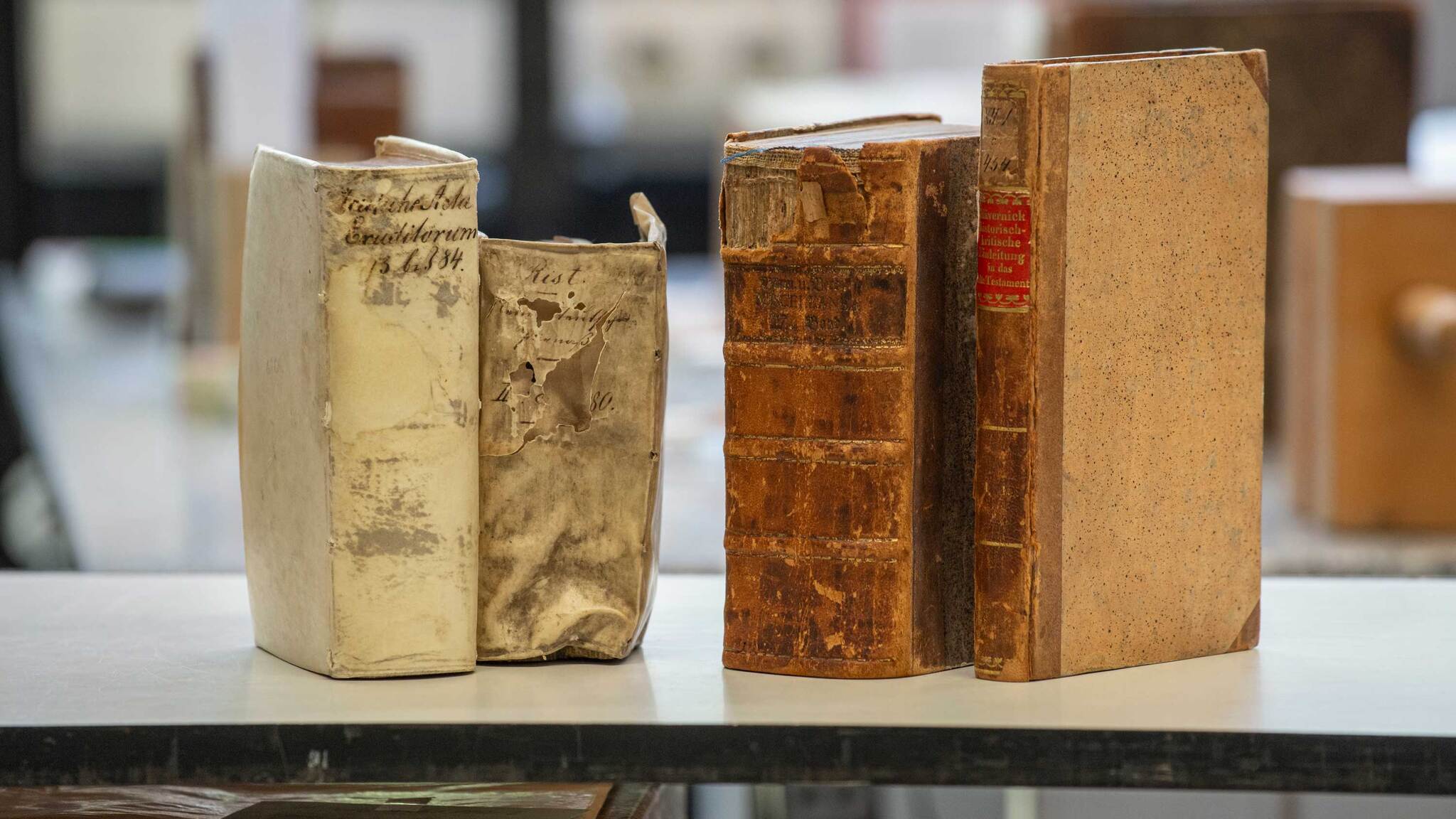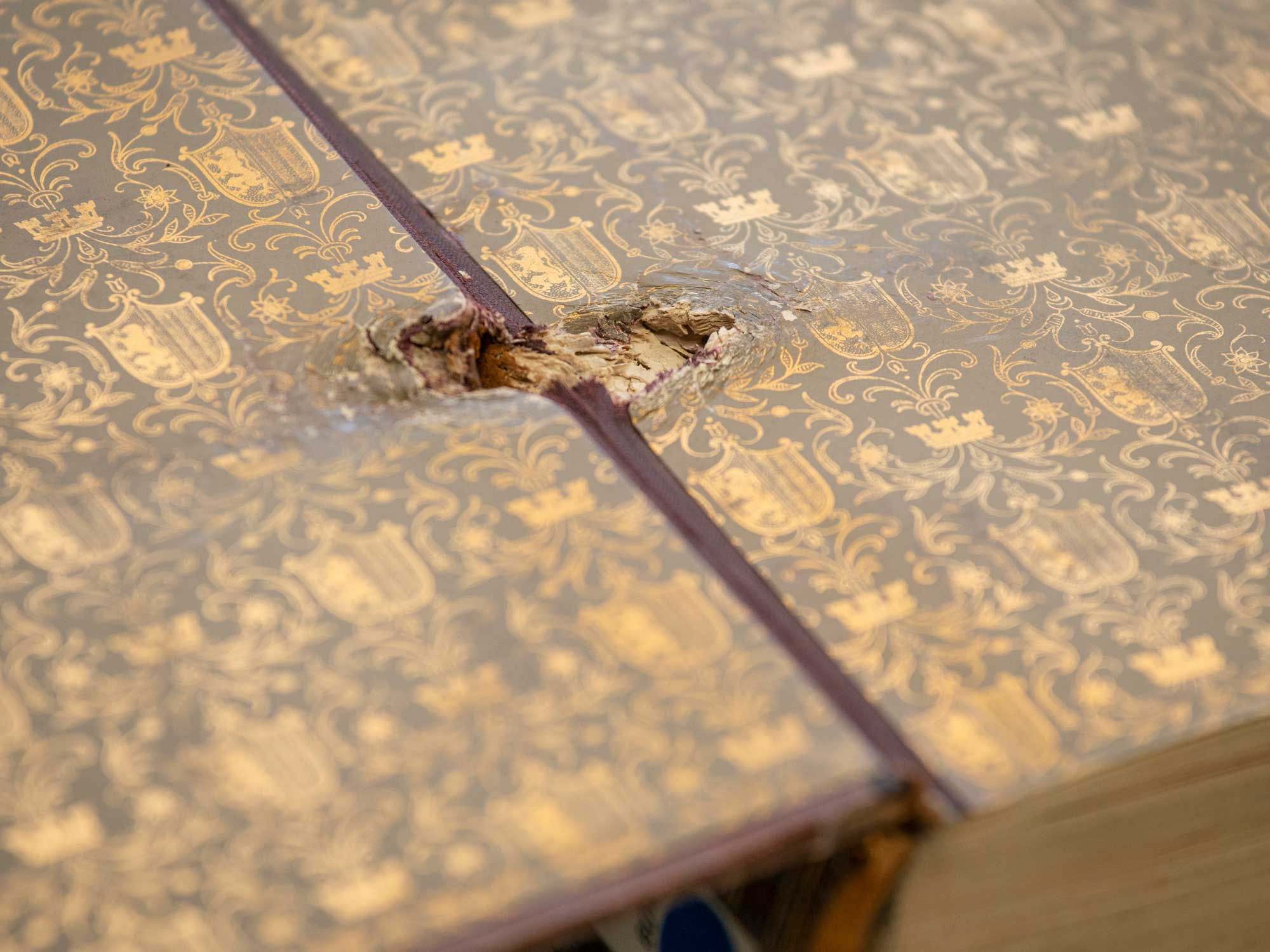
© Felix Clebowski / Universität Bremen
Have You Heard of... the SuUB’s Restoration Workshop?
Equipped with an array of tools that includes brushes, book support wedges, and soot sponges, the restoration workshop saves historical books from decay. Welcome to a slightly different tour of the campus!
With a consistent temperature of 18 to 20 degrees Celsius and a humidity level of 45 to 55 percent, the State and University Library Bremen’s (SuUB) restoration workshop has an optimal climate, which is especially important for the historical book collection. But the workshop not only serves the purpose of preserving books. Centuries of light exposure, temperature fluctuations, improper use, and pests have taken a toll on these important cultural artifacts. Pages crumble, book covers fall apart, print fades. Given that the historical collection includes around 100,000 works, and includes medieval manuscripts, historical maps, incunabula, literary estates, autographs and even papyri, there is no end in sight to the workshop’s restoration projects.
Katherina Schmoll heads the restoration workshop. She and her colleague Ute Regin have already saved countless books. The first step is always the same, says Katherina Schmoll. “First, each book gets a dry cleaning under the fume hood. If necessary, each page is cleaned individually. Surface dirt is a potential breeding ground for mold and pests. Cleaning is the initial preventive measure to hinder this.” They work with gloves, natural bristle brushes, rubber soot sponges, and special wedge cushions that prevent the book spine from being overstretched – and above all, with utmost care.

© Felix Clebowski / Universität Bremen
While this method has stood the test of time, other aspects of book restoration have changed over the years. “Book restoration used to be done one book at a time. However, with so many books in our collections and a restoration process that can take between two weeks and six months per book, we now prioritize by group.” The focus is now on preventive and conservative measures. Elaborate individual treatment is only performed on a select few books.
One of the workshop’s current projects is to remove old labels from some of the historical book spines and replace these with an age-resistant material. “Part of our work includes testing methods and implementing better solutions. Restoration is a scientific process that evolves over time,” explains Katherina Schmoll.

© Felix Clebowski / Universität Bremen
Restoration Sponsorships Support Conservation Measures
Third-party funding and book sponsorships initiated by Friends of the SuUB.help finance these projects. Interested parties can make a donation to sponsor a particularly worthwhile book of their choice. This project funding goes directly toward book conservation. One book sponsorship remains particularly memorable for Katherina Schmoll. “A man gifted his wife a sponsorship to have prints of church music performances from our collection restored. The wife had a close connection to the church, as her father was a pastor. It was nice to see how happy she was about it.”
In addition to the actual work on the books, the restoration workshop has an increasing number of organizational tasks, including loan requests from scientists and museums, exhibition planning, internal training on handling historical materials, digitization projects, emergency planning for fire or water damage, and pest control. The latter, in particular, is a common problem for many libraries, as silverfish can easily be brought in with shipping boxes. “Pest monitoring is very important, as undetected insects can quickly reproduce and infest the entire collection. Paper, or rather the cellulose it contains, serves as their source of food.” Incidentally, silverfish are not just a problem in libraries, but in private households as well.

© Felix Clebowski / Universität Bremen
11th Century Treasure
The history of SuUB Bremen dates back to the Bibliotheca Bremensis, founded in 1660. The oldest items of the collection come from the Cathedral Library and the Bremen Council, which acquired an important scholarly library in 1646. These artifacts include the Gospel Lectionary of Henry III, which was commissioned between 1039 and 1042, and is the most valuable manuscript in the collection to date. Over the centuries, numerous collections and estates of notable Bremen citizens have been added.
After the end of the Second World War, around 100,000 volumes from the historical collection of the time were transported to the Soviet Union as looted art. In the 1990s, 25,000 books were returned from Armenia and Georgia. “Many are still in need of treatment, because some are in very poor condition and restoration is expensive,” explains Katherina Schmoll. They are not publicly accessible, but can be viewed in the manuscript reading room under supervision. Efforts are also being made to digitize the entire historical collection, since this also serves to protect the originals.

© Felix Clebowski / Universität Bremen
A Love for Books
The restoration workshop’s employees are united by their passion for books. “A colleague recently showed us a book that she found in our collection. It had been hit by a ricochet, probably during the war,” says the manager. The bullet or fragment had already been removed, but such finds continue to amaze Katherina Schmoll and her colleagues. “They make history tangible. When I find fingerprints, I am filled with reverence, acknowledging the many people who have held this book before me,” she states.
Further Information
On the history of the State and University Library (SuUB) Bremen